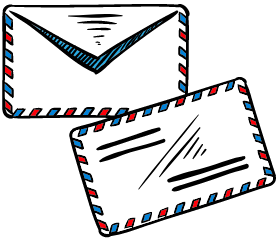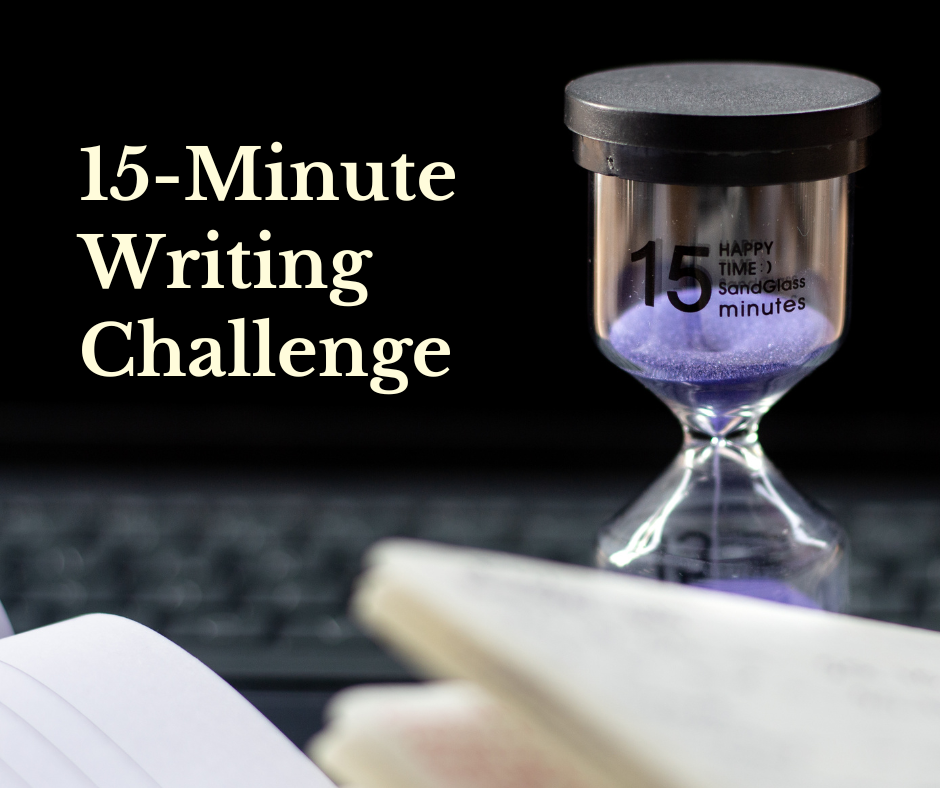One of my coaching clients mentioned that their reluctance to allow themself to write a “shitty first draft” may not be perfectionism but rather impatience.
Re-reading Jeanette Hannaford’s review of The Perfectionists Guide to Losing Control in the light of this conversation about impatience reveals that some of the advice for dealing with maladaptive perfectionism could be summarised as “be more patient with yourself”.
Anne Lamott’s advice to start with a “shitty first draft” (in Bird by Bird) is so well known that it has almost become cliché. And yet, allowing yourself to actually write a truly “shitty” first draft is harder than you think.
Is that because you are a perfectionist? Or are you impatient? What difference would it make?
Impatience, perfectionism, and trust.
When you struggle to put words on the page, or find yourself deleting and rewriting as you write each sentence, never getting into flow, it might not matter what you name the cause of that behaviour.
You are frustrated.
It feels awful.
The longer it goes on, the less confident you are that you can write the thing you want and need to write. Which probably leads to you feeling less confident that you can do this job at all.
Whether that’s perfectionism or impatience or something else, it is most definitely maladaptive. You *can* do this!
Questioning your initial diagnosis of the problem may be helpful. However, it may also be that whatever the root cause, the treatment is the same.
What you need is confidence that you can produce acceptable work, even if the process involved in doing so is long and complicated.
It’s called a *first* draft for a reason. You need to lower your expectations so you can get ideas out of your head onto the page.
The fact that you require several rounds of revision to get to prose that you feel good about putting out into the world does not mean you’re broken.
You need to trust that although this is currently unacceptable garbage that you wouldn’t even show to your most trusted friend, it can *become* something that more closely resembles your ideal finished product.
Not today. Probably not tomorrow. But someday.
What does a first draft need?
The phrase “shitty first draft” captures the sense of low expectations but it’s a bit too abstract to be a real goal.
There are many many ways that a draft can be “shitty”. Some of them are more useful than others as a starting point for producing the kind of work you are aiming for.
Your goal is to *become* more confident about what you know about the topic and what you want to say about it.
The only expectation you need for your first draft is that it allows you to confidently select a focus for your article, chapter, or book, knowing that you have the evidence you need to make this contribution to knowledge.
The process will involve following your curiosity about your research, following interesting threads, trying out arguments, and using the evidence to support them.
Your first draft doesn’t need to contain all the elements of the publishable piece.
The prose need not be elegant. It need not even be in prose.
Clarity about what you want to say is the *only* expectation you have at this stage.
You need a process you can trust.
There will still be a *lot* of work to do to make it ready to be read by others. That is very normal.
Knowing how much work will be involved is probably also the main reason you are impatient with the first draft.
“If your first draft weren’t quite so ‘shitty’, maybe there would be fewer rounds of revision.” You might even tell yourself that your growth as a writer should be evident in the quality of your first drafts.
My client noticed that they didn’t *want* to write multiple drafts of this thing. It felt like it shouldn’t require them. They were so impatient to get to the “good draft”, they struggled to write at all.
One thing I’ve learned from years of listening to Rachael Herron’s podcast: Ink in Your Veins (fka How Do You Write?) is that learning to love revision allows you to draft more quickly.
If you *accept* that multiple rounds of revision will be required, and even have a process for moving through them, it’s easier to allow yourself to be messy when drafting.
Another almost cliché about writing is “writing is rewriting”. It’s true but, like “shitty first draft”, too abstract to be of much help.
How much is “a lot”? What kinds of work are involved? How do you know you are doing the right kind of work to make this better?
An analogy to think with:
Writing is a craft. Sometimes it’s helpful to think about a completely different craft so the process becomes clearer.
Let’s think about woodworking for a moment.
This is not a craft I am proficient in at all, but I own some lovely pieces of handcrafted wood and I’ve browsed in a hardware store a time or two. It seems like this could be a helpful analogy.
Every highly polished wooden surface starts as a rough cut piece of wood.

When you cut down a tree with a chainsaw and roughly chop it into logs it looks nothing like this fine carving of an American woodcock I have on a shelf in my home.
There are important things to know about the wood itself that will inform the specific process you use, but all of those processes will have a common principle: You start with larger tools with coarser sharp edges.
You may use more than one type of tool — saws, knives, chisels — to shape the block of wood. You may use more than one size or grade of each tool. As your project progresses you will switch to smaller tools with finer sharp edges.
Once the object you are creating is close enough to its final form, even the finest saws, knives, and chisels are too big. If you want the surface to be smooth, you’re going to need files and sandpaper.
Files and sandpaper are also graded from coarse to fine. You only use the finest grade of sandpaper at the very end of the process.
Figuring out your (re)writing process.
Your published journal article or book is that fine carving.
Your first draft (or call it a zero draft if you must) is a block of wood that probably still has the bark on it. It’s not a tree. But it looks nothing like that woodcock.
The rough draft of your initial attempts to capture your thoughts in words is not complete garbage at all. It is the starting point of a process.
A starting point in which you decide whether it will become a carving of an American woodcock, a carving of some other bird or animal, or a bowl, or spoon. Perhaps a bed with carvings of birds on the headboard.
Even more mundane things like a shelf, or a chair, or a bed require many steps to construct and polish.
While it is possible to use fine grade sandpaper on a log you’ve just cut with a chainsaw, I hope you now see why fucking about with precise vocabulary, spelling, and punctuation is not the best use of your time when you are trying to get the words out of your head onto the page.
Be patient.
You need to find a process that will take you there. A process you can trust.
Figure out what tools you need to gradually shape your draft.
Start with the big stuff like structure. Gradually move to the smaller stuff. Don’t get the fine grade sandpaper out until you are almost done.
There is lots of help for those next stages…
Writing this post really cemented for me that my strength is in helping you get the words on the page. Those coaching clients of mine who are working on books are usually writing first drafts, in the sense that they are still deep in the part of the process where they need to engage directly with the primary sources.
I know what questions to ask you to help you figure out what your revision processes might look like, and I can suggest things to try, but that is not my expertise.
Luckily I know other people who specialize in the next stages. My list is nowhere near complete. The term you need to find these people is “developmental editing”.
They write books.
They offer workshops.
They offer book coaching in which their editorial skills influence how they work with you.
They read your shitty first draft (or maybe something that has moved on from that but still needs a lot of work) and give you comments to guide you in restructuring and revising your book.
Here are a few books that might help you.
All of them are most useful once you’ve got that first draft down. The draft that helped you decide what you wanted to say, and feel confident that you have the evidence to say it, even if you haven’t quite worked out how yet.
No, reading these will not help you write a less shitty first draft. That’s a fool’s errand. They will help you trust that you can turn that draft into something publishable.
- The Book Proposal Book by Laura Portwood-Stacer (Princeton University Press)
– Writing a book proposal is an excellent next step after the first draft, even if you won’t be submitting it anywhere yet - Making Your Manuscript Work by Laura Portwood-Stacer (Princeton University Press)
– Teaching you to be your own developmental editor - Laura also runs workshops
- Writing Your Journal Article in Twelve Weeks by Wendy Laura Belcher (University of Chicago Press)
- The Dissertation-to-Book Workbook by Katelyn Knox & Allison van Deventer (University of Chicago Press)
– Yes, you can substitute any first draft for the dissertation in this title - Katelyn & Allison also run workshops
- Refining Your Academic Writing by Pat Thomson (Routledge)
- Writing For Peer Reviewed Journals by Pat Thomson & Barbara Kamler (Routledge)
- Publishing From Your Doctoral Research by Janet Salmons and Helen Kara (Routledge)
– Helpful for figuring out what kind of output is best suited to the contribution you want to make and making those early decisions, even if this is not your doctoral research - Book Brilliance (fka Elevate)- Jane Joann Jones hasn’t written a book, but she runs a program that combines instruction, coaching, and developmental editing.
- Crafting Your Scholarly Book – Ellen Tilton-Cantrell also has a program that helps you transition from first draft to revision process.
Related Posts:
Untangling your thoughts as you write
Pulling a thread from your tangled mess
Imperfect notes for perfectionists
The impatient writer by Clare O’Farrell
This post was originally sent to newsletter subscribers on 13 March 2025.







